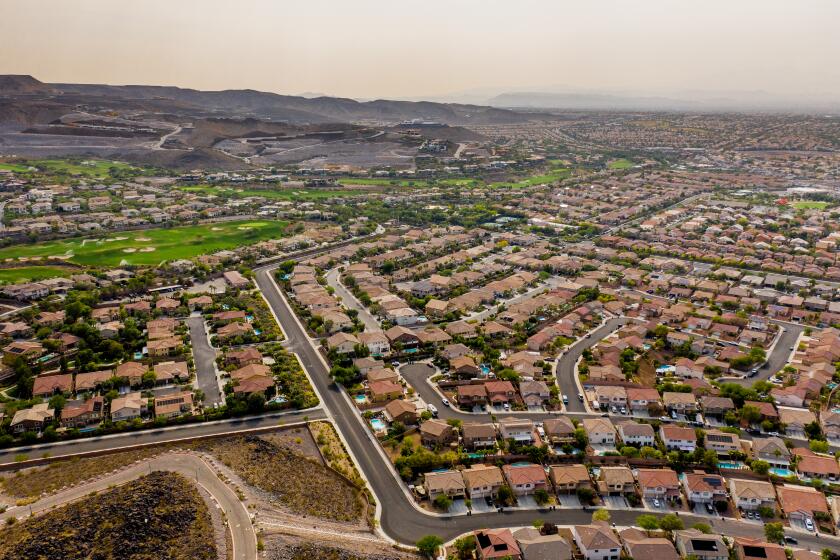Nearly half of Los Angeles adults double up on housing, study finds

When it comes to doubling up with roommates, crashing at your cousin’s or staying at your parents’ house well into your 20s, there’s no place like Southern California.
Nearly half of all working-age adults in Los Angeles and Orange counties live in a home with another adult who is not their spouse -- a higher percentage than any other big city in the country, according a new report by real estate website Zillow. In second place: the Inland Empire.
Economists at Zillow crunched U.S. census numbers and found that 47.9% of adults in metro L.A. lived in “doubled-up” households in 2012, a number that has grown rapidly -- up from 41.2% in 2000 -- as the recession and yo-yo-ing housing market have pushed more people to share apartments.
“You’ve got a lot of households that are blending together,” said Zillow economist Skylar Olsen. “They’re doing that to make housing more affordable.”
That’s especially true in Southern California, where relatively high costs and relatively low wages combine to create what is, by some measures, the least affordable housing market in the country, especially for renters. Add in large immigrant communities for whom -- at least in some cases -- inter-generational living is more common, and L.A. has an exceptionally high share of shared households. A Times analysis of census data found that more than half of the nation’s most-crowded census tracts are in L.A. and Orange counties.
As the economy improves, Olsen said, at least some of those house-sharers are likely to move out on their own, probably to rental apartments. That’s going to create a lot of demand for new housing. If the number of adults per household returned to 2000 levels, Zillow estimates that there would be an additional 315,473 households in L.A. and Orange counties -- a 7.5% gain -- and 162,474 more in the Inland Empire, up 12.6%.
“There’s a lot of potential energy that’s ready to spring out,” Olsen said. “That’s one of the reasons we’re seeing multifamily construction pick up. There’s clearly room for developers to make some money by providing more apartments.”
However, in a market such as Southern California, it’s an open question whether they can provide them fast enough. L.A. County is short nearly 500,000 affordable apartments already, according to a study earlier this year by the Southern California Assn. of Nonprofit Housing, and homebuilding remains well below pre-crash levels. Los Angeles Mayor Eric Garcetti last week called for 100,000 new units of housing in the city by 2021, but details on how he hopes to get even that many built so far are scarce.
If nothing else, the demand that a stronger economy is expected to uncork should help spark more construction, Olsen said, by making it easier for projects to pencil out a profit. As they get built, she predicted, more people will move out on their own. That, in turn, may keep a lid on rents that have been climbing fast, due in part to tight supply.
“One of the beauties of free markets is that they adjust,” Olsen said. “You wouldn’t expect to see more renter households until supply comes back. When it does, it’ll slow the growth in rents, at least.”
Keep an eye on housing and real estate in Southern California. Follow me on Twitter: @bytimlogan







